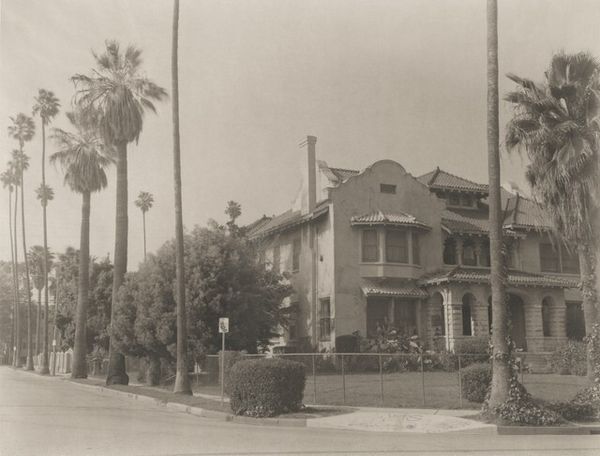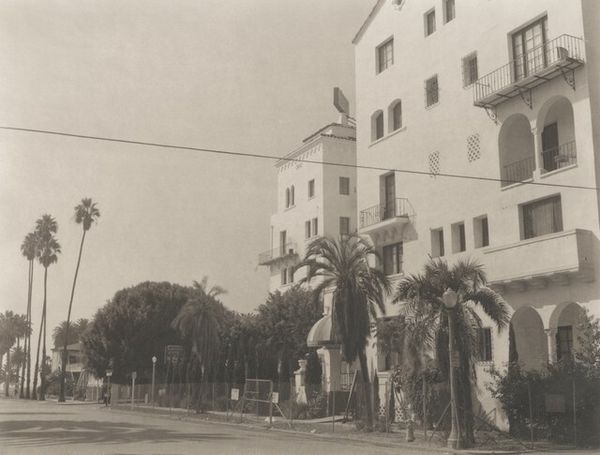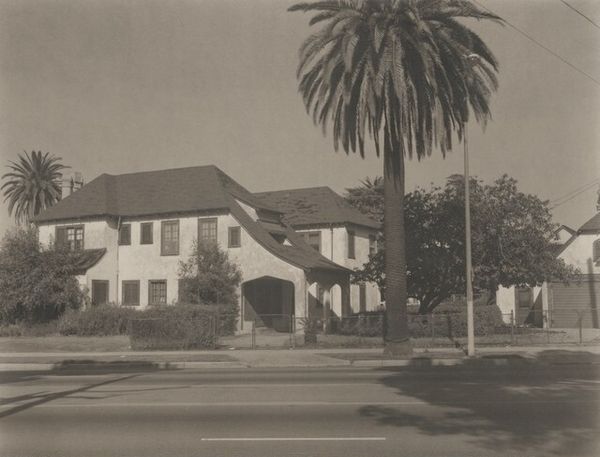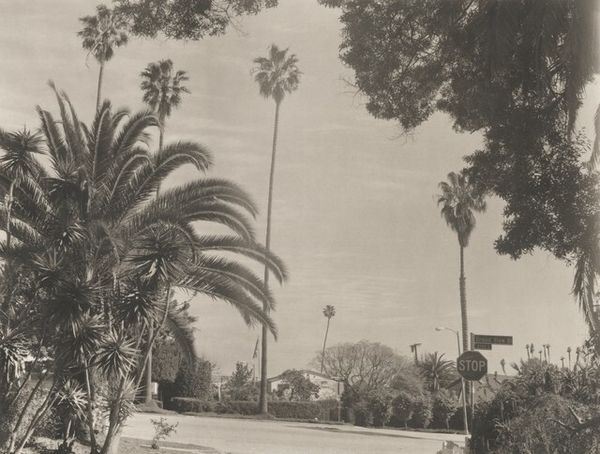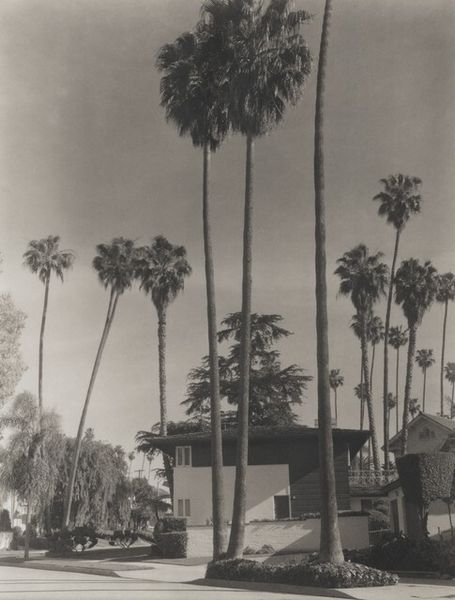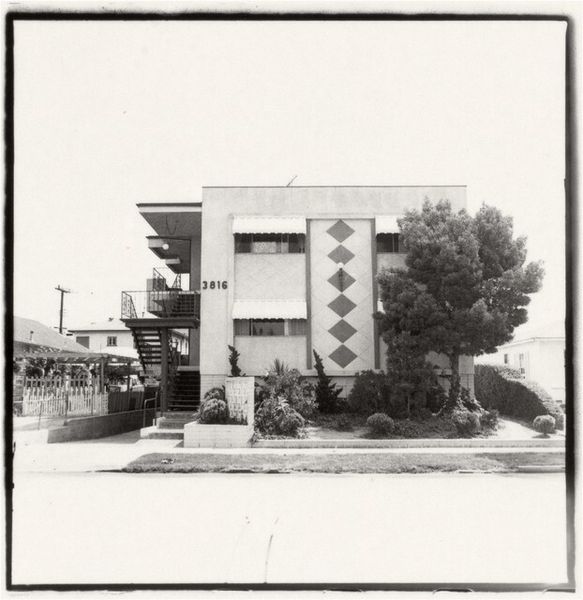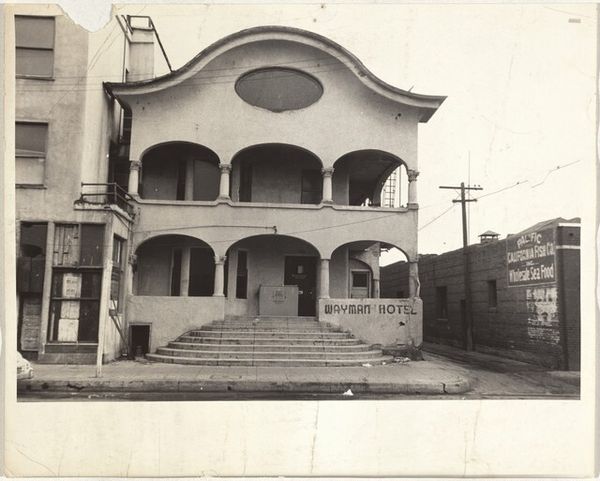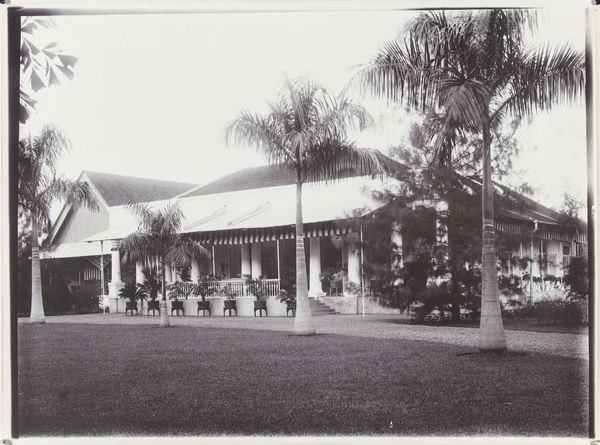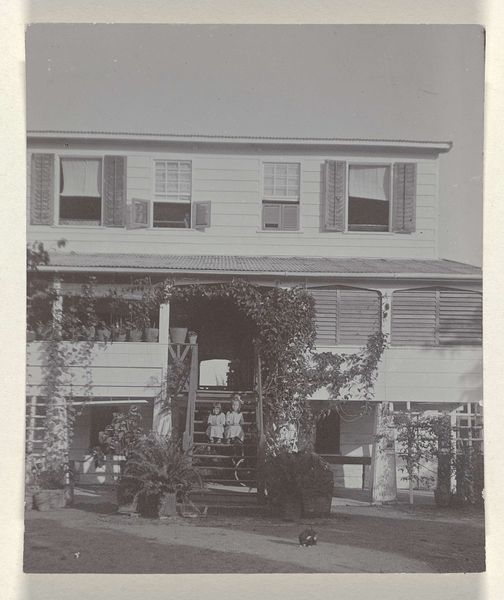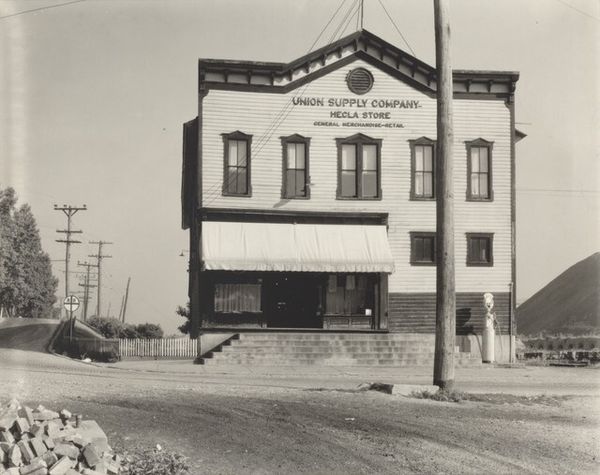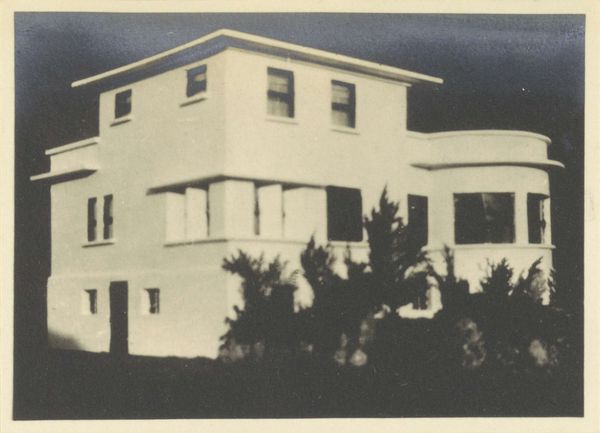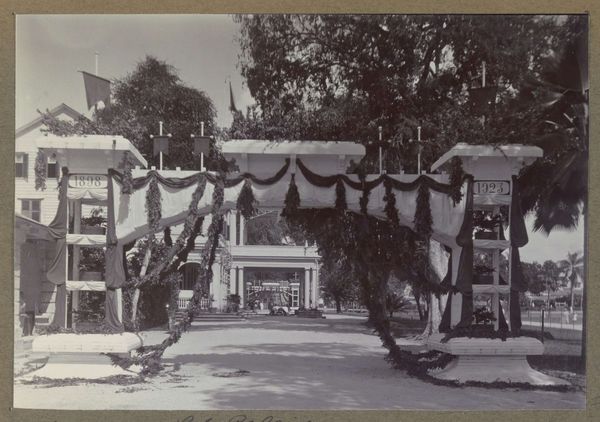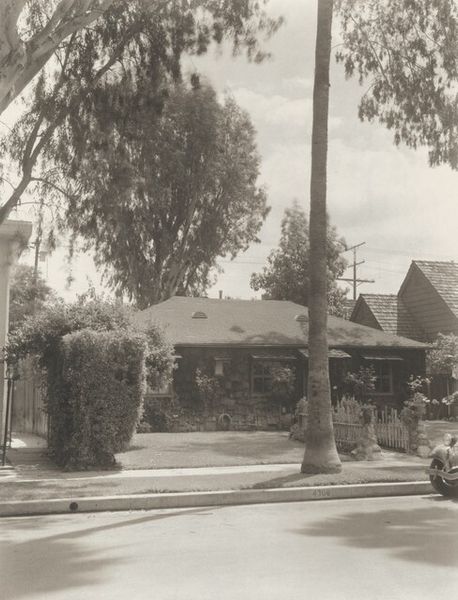
photography
#
black and white photography
#
landscape
#
outdoor photograph
#
archive photography
#
street-photography
#
photography
#
historical photography
#
monochrome photography
#
cityscape
Dimensions: image: 33.5 × 26 cm (13 3/16 × 10 1/4 in.) sheet: 42.5 × 35.1 cm (16 3/4 × 13 13/16 in.)
Copyright: National Gallery of Art: CC0 1.0
Curator: This is "Sunset Boulevard/La Brea," a monochrome photograph possibly taken in 1995 or 1996 by Madoka Takagi. It shows a building in Los Angeles. Editor: It has an oddly forlorn feeling. The hazy gray washes everything out, giving it an almost ghostly quality. There's such a sense of stillness in the image too. Curator: It's street photography, but removed from the bustle we typically associate with that. Looking closer, we see the building’s facade is overwhelmed with commercial signs—Skybell Energy Systems competes for space with signage for “Face Creams and Lotions." This photograph shows how advertising transforms a place over time, and the impact that material accumulation and waste has on our cultural memory. Editor: You're right, the building’s bombarded by different messaging. All that aside, I'm drawn to how those palimpsestic layers reveal earlier forms of advertising language, and their power to shape public consciousness over time. Those slightly faded, almost dreamlike advertisements really do recall images of long ago. The palms in the backdrop speak of warmth, paradise. The image captures the essence of Los Angeles! Curator: Well, thinking about the photograph itself, the contrast relies heavily on the manipulation and the qualities inherent to black and white photography to depict the building and these palm trees as almost surreal presences. I wonder if Takagi was drawn to this scene precisely because it so openly displayed this transformation of a space by commodification. It reflects the broader transformations occurring throughout urban spaces in the late twentieth century. The chain link fence hints to an invisible, uninviting and private frontier that invites nobody into this commercial place. Editor: So, beyond its materiality, how do you interpret the iconographic content? Curator: Well, to my mind, the symbolism feels less intentional and more about exposing the layered effects of economic forces on the urban landscape—how buildings morph to serve the demands of consumerism. Editor: I find that compelling. It really underscores how consumer desires imprint on places and become etched in our shared symbolic landscape. Thanks for bringing this to light. Curator: Of course. Thank you for lending your expertise in helping others contemplate and contextualize works like these.
Comments
No comments
Be the first to comment and join the conversation on the ultimate creative platform.
